Virtual vs. Physical Home Staging: Which Offers Better Value?
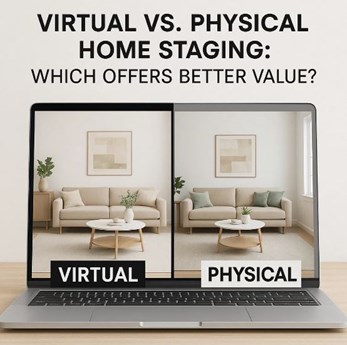
When listing a home for sale, first impressions are everything. In today's competitive real estate market, home staging plays a key role in attracting buyers and closing deals faster. But with the rise of digital tools, sellers now face a new choice: virtual staging or physical staging?
Both options help enhance your property's appeal, but which one gives you better value for your investment? Let’s explore the pros, costs, and when to use each — whether you’re a homeowner, a buyer agent, a seller agent, or part of a property management team.
What is Physical Home Staging?
Physical staging involves furnishing a property with real furniture, accessories, rugs, and lighting to create an inviting, livable space. It helps potential buyers visualize how the rooms function and feel in real life.
Seller agents and experienced home buyer agents often recommend physical staging for open houses, walkthroughs, and high-end homes — where in-person impression matters the most.
Key Benefits:
- Creates emotional connection during in-person showings
- Highlights the functionality of each space
- Improves the look and feel of a vacant or outdated home
However, physical staging comes with higher costs, setup time, and logistical coordination. It may involve renting furniture and hiring a stager for several weeks — all of which can add up.
What is Virtual Home Staging?
Virtual staging is a digital alternative that adds furniture and decor to listing photos using design software. It transforms empty or outdated rooms into modern, styled spaces — without physically altering the property.
This method is especially useful when marketing the home for sale online, where most buyers — and their home buyer agents — begin their search.
Key Benefits:
- Much more affordable than physical staging
- Fast turnaround time (1–2 days)
- Ideal for vacant homes or tight marketing deadlines
Virtual staging, however, only enhances photos. Buyers still see the space during in-person visits, so expectations need to be managed clearly. Buyer agents typically recommend disclosing that images are digitally staged to avoid confusion.
Cost Comparison: Virtual vs. Physical Staging
When it comes to cost, virtual staging clearly leads in affordability. Prices usually range from $50 to $150 per room, depending on how many photos need editing. It's a smart option for homeowners who want to showcase their property online without breaking the bank.
On the other hand, physical staging is a bigger investment, typically costing $1,500 to $4,000 or more. This depends on the size of the home, the number of rooms staged, the duration of the staging period, and the quality of furnishings used. Physical staging also includes design consultation, delivery, labor, and setup time.
Virtual staging delivers results quickly — often within 24 to 48 hours — while physical staging requires several days to plan and execute. For sellers working with property management companies or listing multiple units, virtual staging saves time and reduces costs. However, seller agents and homeowners looking to impress during in-person showings may still prefer the impact of physical staging.
Which One Offers Better Value?
It really depends on your selling strategy and buyer expectations.
If your listing will receive a lot of online traffic and limited in-person visits, virtual staging provides excellent value for minimal cost. It’s fast, flexible, and visually appealing. That’s why many home buyer agents encourage virtual staging to boost initial interest in the listing.
But if you’re targeting high-end buyers or working with a buyer agent who plans to host multiple showings, physical staging adds more impact during walkthroughs. It gives the home warmth, scale, and a lifestyle buyers can imagine themselves in.
In some cases, combining both options makes the most sense — using virtual staging to enhance listing photos and light physical staging for select rooms to create a welcoming feel during visits.
What Works Best for Different Properties?
- Vacant Homes: Virtual staging is cost-effective and delivers quick visual results.
- Luxury Properties: Physical staging aligns better with buyer expectations.
- Furnished or Occupied Homes: Partial physical staging or refresh styling may be enough.
- Investment or Rental Properties: Virtual staging saves time and money for property management firms managing multiple listings.
Final Thoughts: Choose the Right Tool for Your Sale
At the end of the day, both staging methods serve a purpose. Seller agents and real estate professionals should weigh the pros and cons based on the market, budget, and the specific needs of the home for sale.
If your goal is to sell faster, make a strong first impression, and maximise value, home staging — whether virtual or physical — is a smart investment.
Need Help Getting Started?
Looking for virtual or physical staging pros near you? Join Sulekha to connect with top-rated property management experts, buyer agents, seller agents, and staging professionals in your area.
Searching for Real Estate Agents? Let’s make your search simple with professionals!
Take your Real Estate Agents to the next level with Sulekha. Boost your online visibility, connect with more clients, and grow effortlessly!
Blogs Related to Real Estate Agents

Virtual vs. Physical Home Staging: Which Offers Better Value?
When listing a home for sale, first impressions are everything. In today's competitive real estate market, home staging plays a key role in attracting buyers and closing deals faster. But with the rise of digital tools, sellers now face a new choice:
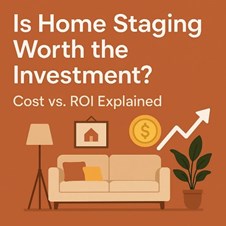
Is Home Staging Worth the Investment? Cost vs. ROI Explained
When preparing your home for sale, many homeowners ask — is home staging worth the cost? The short answer: yes. But let’s explore why, how much you’ll need to invest, and what kind of return sellers and agents can expect in 2025’s real estate market.
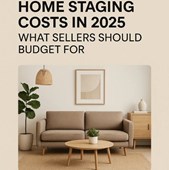
Home Staging Costs in 2025: What Sellers Should Budget For
Selling a home in today’s market requires more than just a fresh coat of paint. In 2025, home staging remains a crucial tool to help your property stand
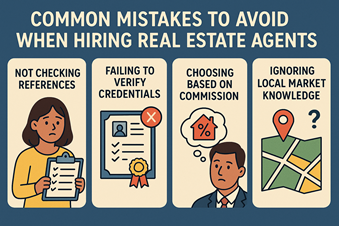
Common Mistakes to Avoid When Hiring Real Estate Residential Agents
Finding the right real estate residential agent can make all the difference in your home-buying or selling experience.
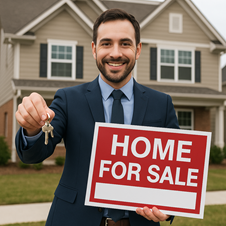
How First Time Home Buyer Agents Can Help You Find Off-Market Properties
Your Secret Weapon to Scoring Hidden Real Estate Gems Buying your first home is a wild ride—equal parts thrilling and “what did I sign up for?” With the housing market hotter than a summer barbecue, finding the one can feel like chasing a unicorn. E
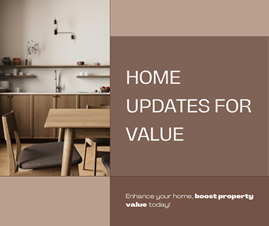
Best Home Updates to Increase Property Value
When it comes to selling your home or simply enhancing its value, making strategic updates can yield significant returns. Whether you’re planning to sell soon or just want to invest in your property for the long term, here are some of the best home u


